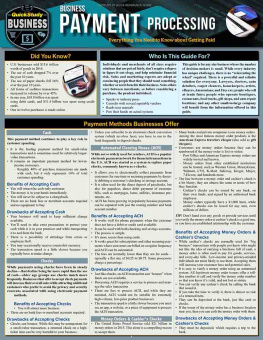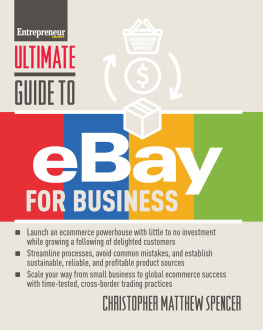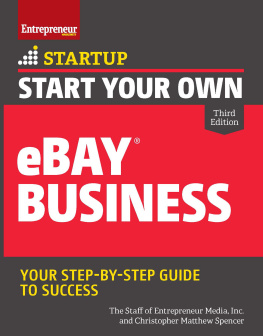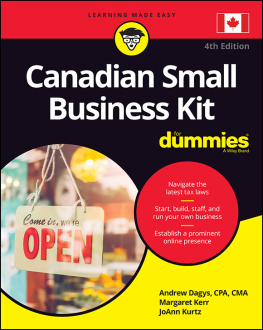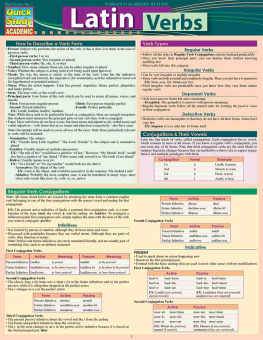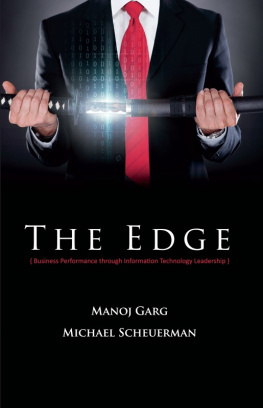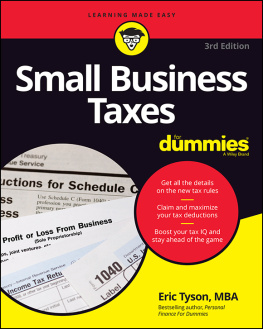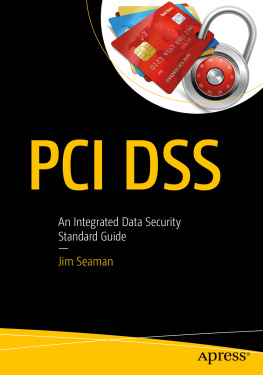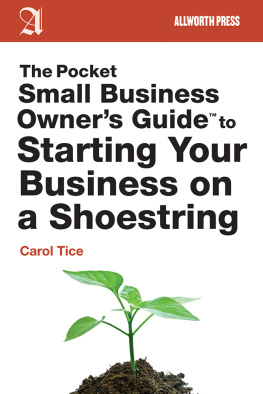Did You Know?
- U.S. businesses sold $15.6 trillionworth of goods in 2016.
- The use of cash dropped 7% overthe past 10 years.
- The use of paper checks fell 34%over the past 10 years.
- All forms of cashless transactionsincreased in volume by over 45%.
- In one year, $63.8 billion was spentusing debit cards, and $31.4 billion was spent using creditcards.
- One in twelve purchases is made online.
Who Is This Guide For?
Individuals and merchants of all sizes requiresolutions that are priced fairly, dont require a degreein figure-it-out-ology, and help minimize financialrisk. Sales and marketing experts are adept atconvincing people that they should want something,whether or not it benefits their business. Sales ethicsvary between merchants, so before considering apurchase, the prudent individual:
- Speaks to industry peers
- Consults with several reputable vendors
- Reads user manuals
- Puts their hands on actual systems
This guide is for any size business where the numberof decision-makers is small. While every industryhas unique challenges, there is no reinventing thewheel required. There is a powerful and reliablesolution for everyone. Lawyers, doctors, autodetailers, carpet cleaners, housekeepers, artists,eBayers, Amazonians, and Etsy-ers; people who sellat trade fairs; people who operate boutiques,restaurants, food trucks, gift shops, and auto repairlocations; and any other small-to-large companywill benefit from the information offered in thisguide.
Payment Methods Businesses Offer
CashThis payment method continues to play a key role incustomer spending.
- It is the leading payment method for small-valuetransactions and is sometimes used for relatively largervaluetransactions.
- It remains an important payment method for lowerincomecustomers.
- Roughly 40% of purchase transactions are madewith cash, but it only represents 14% of totalcustomer spending.
- You will attract the cash-only customer.
- The money is in your hands immediately.
- You will never be subject to a chargeback.
- There are no bank fees or merchant accounts requiredand no equipment to buy.
- Your business will need to keep sufficient changeavailable.
- Youll need to take extra precautions to protect yourcash while it is in your premises and while transportingit to and from the bank.
- There is a possibility of shrinkage from errors oremployee theft.
- You may occasionally receive counterfeit currency.
- The transaction speed is a little slower because youtypically have to make change.
While payments using checks have been in steadydeclinethat decline being far more rapid than the useof casholder age groups use checks much morefrequently. Businesses that offer to accept check paymentswill increase their overall sales while attracting additionalcustomers who prefer to avoid the privacy and securityconcerns associated with using electronic paymentmethods.
Benefits of Accepting Checks- You will attract more business.
- There are no bank fees or merchant accounts required.
- Checks can bounce. While this may be unimportant fora small-value transaction, a returned check on a highticketitem can be very harmful to your business.
- Unless you subscribe to an electronic check conversionsystem (which involves fees), you have to run to thebank frequently to deposit checks.
While not so widely used for retailers, ACH is a popularelectronic payment network for financial transactions inthe U.S. ACH was started as a system to replace paperchecks, commonly known as e-checks.
- It allows you to electronically collect payments fromcustomers for one-time or recurring payments by directlydebiting a customers checking or savings account.
- It is often used for the direct deposit of paychecks, butalso for paperless, direct debit payment of customerbills, such as mortgages, loans, utilities, insurance premiums,etc.
- ACH has been growing in popularity because paymentscan be captured with just the routing number and bankaccount number.
- It works well for phone payments when the customerdoes not have a debit or credit card available.
- It can be used with both checking and savings accounts.
- The process is simple.
- Its more secure than using cards.
- It works great for subscriptions and other recurring paymentswhere customers are billed on a regular frequencyand ACH can be automated.
- The fees are normally lower than they are for cardstypically a flat rate of $0.25 to $0.75. Some processorscharge a percentage.
- Just like checks, an ACH transaction can bounce whenfunds are not available.
- Processing ACH requires a service to process and managethe sales transaction.
- There are fees to process ACH, and while they arenominal, ACH would not be suitable for extremelyhigh-volume, low-price product businesses.
- The transaction speed is a little slower because you mustuse an app, a website, or a piece of equipment to processthe ACH transaction.
- The United States Postal Service sold $21 billion inmoney orders in 2015. This alone is a compelling reasonto accept them.
- Many banks and private companies issue money orders.Among the most famous money order products is theAmerican Express travelers cheque (also sold as giftcheques).
- Customers use money orders because they can bereimbursed if the money order is lost or stolen.
- Post Office and American Express money orders arewidely trusted and known.
- Money orders from other established institutionscan be trusted, such as Western Union, MoneyGram,Walmart, CVS, K-Mart, Safeway, Kroger, Meijer,7-Eleven, and hundreds more.
- The line between a money order and cashiers check isa bit blurry; they are almost the same in terms of howthey function.
- Cashiers checks can be issued by any bank, ontheir own funds, and signed by an authorized bankemployee.

